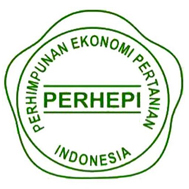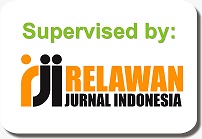Competitiveness and Export Similarity of Indonesia’s Coconut Oil
Abstract
Coconut oil is one of the vegetable oils that became potential export product in Indonesia. Philippines, Indonesia, and Malaysia are three of the biggest exporters of coconut oil in ASEAN, by knowing their position in the Internastional trade of Coconut Oil it become an evauation for the sustainability of the Indonesia’s coconut oil trade.,The aims of this research are knowing the position of Coconut Oil (Crude Coconut Oil with HS Code 151311 and Its derivative with HS code 151319) compared to the competitors during 2001 to 2017 by using Revealed Comparative Advantage (RCA), Acceleration Ratio (AR), Trade Specialization Index (ISP) and Export Similarity Index (ESI) for adding information about the similarity of the export structure of coconut oil from Indonesia, Philippines, and Malaysia to the world market. The results of the research show that Indonesia has high competitiveness, and has the highest acceleration in the growth of Crude Coconut Oil’s exports (HS Code 151311) compared to the Philippines and Malaysia. Meanwhile, Indonesia and Philipines have a higher similarity market of coconut oil than Indonesia and Malaysia. Indonesia should increase the capacity industries for derivative of crude coconut oil (HS code 151319) so it could increase volume and value export because it has a higher benefit than crude coconut oil.
Keywords
Full Text:
PDFReferences
FAOSTAT. (2019). Production (Crops) Coconuts Commodity Statistic. Retrieved from http://www.fao.org/faostat/en/#da ta/QC
Finger J.M. and Kreinin, M.E. (1979). A measure of export similarity and its possible uses. Economic Journal 89: 905-912
Fundira, T. (2013). An analysis of Africa’s export performance and export similarity for select countries within the Tripartite Free Trade Area market. Trade Law Center Trade Brief S13TB 03(10): 1-23
Ministry of Trade. (2013). Market Brief Produk Kelapa dan Olahannya di Pasar Jerman. Ministry of Trade. KBRI Berlin
Muslim, Chairul. (2006). Analisis Daya Saing Produk Ekspor Agroindustri Komoditas Berbasis Kelapa di Indonesia. ICASEPS Working Paper No. 87. Indonesia Center of Agricultural Sosio Economic and Policy Studies.
Nasrudin, Sinaga, B.M., Firdaus, M., and Walujadi, D. (201)4.China-ASEAN free trade: complementarity or competition. IOSR Journal of Economics and Finance (IOSR-JEF) 3(4): 23-31.
Peters, E.D. (2008). The impact of China’s global economic expansion on Latin America. World Economy & Finance Research Programme, 4: 1-55
Silalahi, U. ( 2015). Metode Penelitian Sosial Kuantitatif. Refika Aditama. Universitas Pahrayangan.
Tambunan, T. ( 2001). Perekonomian Indonesia: Teori temuan dan Empiris. Penerbit Ghalia Indonesia. Bogor.
Tambunan, T. (2004). Globalisasi dan Perdagangan Internasional. Penerbit Ghalia Indonesia. Bogor.
UNComtrade. (2019). Commodity Statistic. Retrieved from https://comtrade.un.org/data/ itc
Xu, Xinpeng and Song,L. (2000). Export similarity and the pattern of East Asian development,"Chapters, in: P. J. Lloyd & Xiao-guang Zhang (ed.), China in the Global Economy
Yao, A., and Wan, L. (2014). Competitiveness of China’s agricultural product export to the United States of America. Asian Agricultural Research 6(12): 9-13.
DOI: https://doi.org/10.32528/agribest.v4i2.3546
Refbacks
- There are currently no refbacks.
Copyright (c) 2020 Jurnal Agribest

This work is licensed under a Creative Commons Attribution 4.0 International License.
INDEXING SERVICES
</














